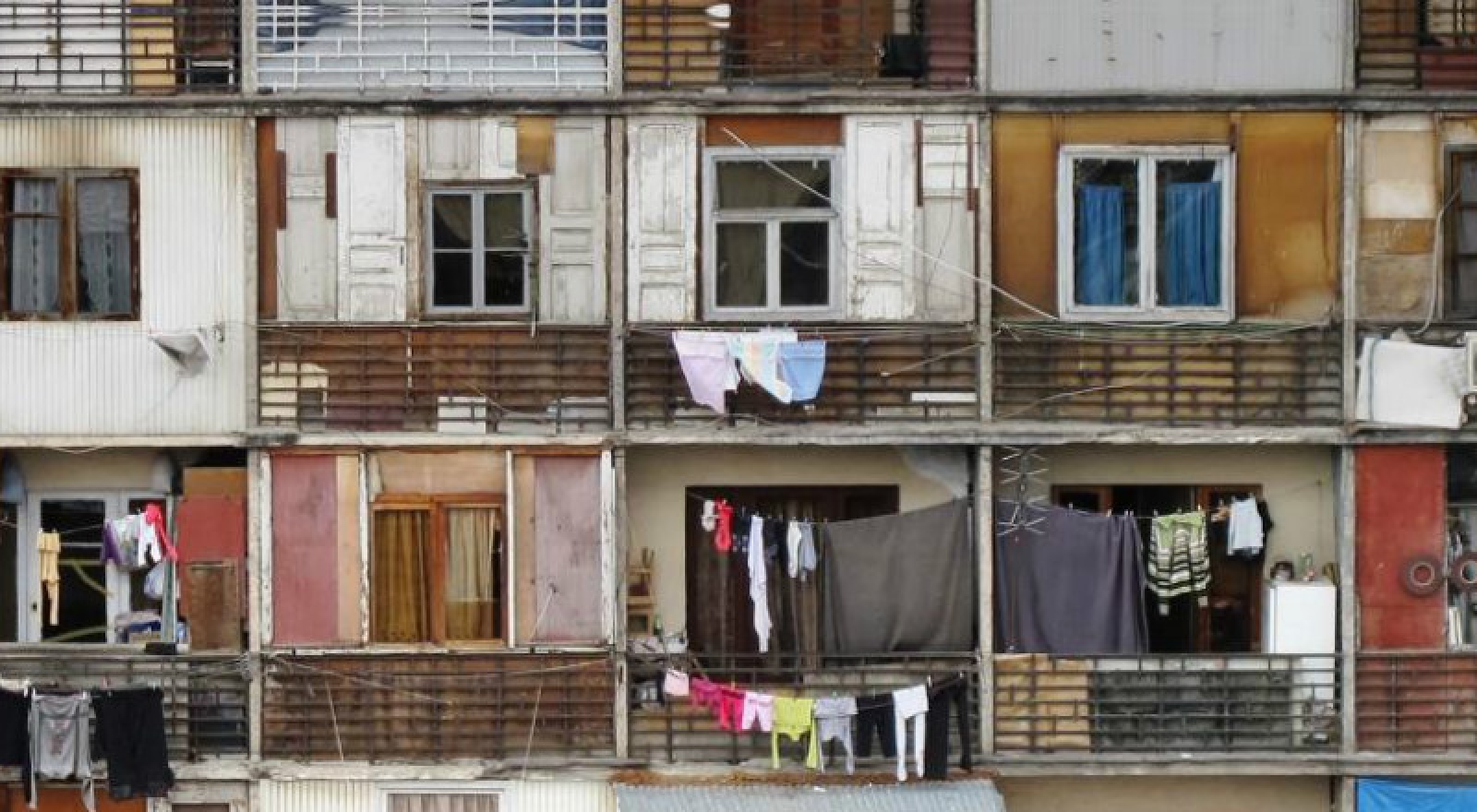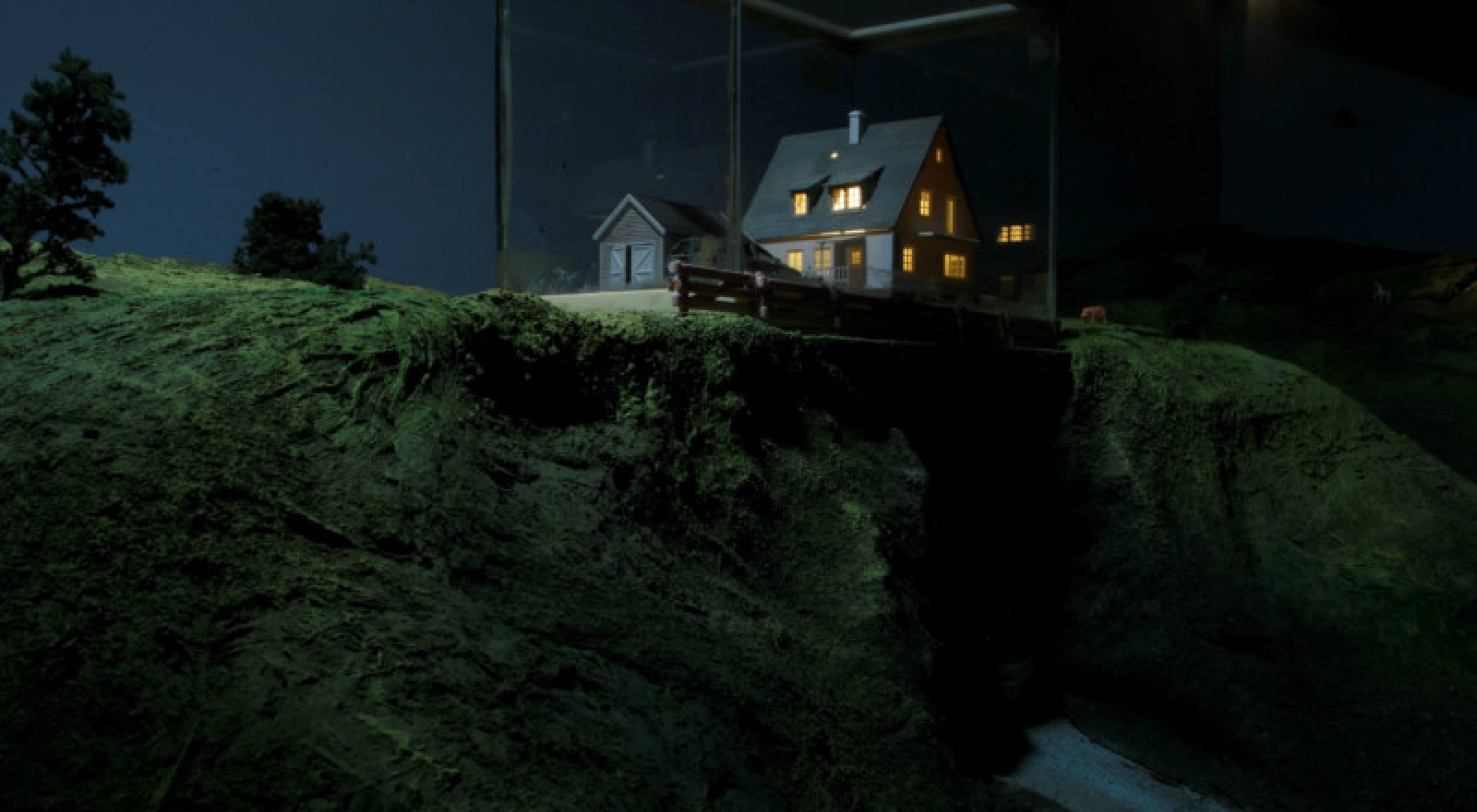House of Eutopia
Filip Berte / CAMPO

House of Eutopia is an impressive installation in which the artist and architect Filip Berte examines and reveals the social, political, geographic and historical margins of Europe. Berte is a masterful observer of the margin and the outsider, and withHouse of Eutopia tries to make the visitor aware of this reality. Under the name of Eutopia Filip Berte has been constructing his house room by room at the CAMPO arts centre since 2006.
He has exhibited and worked from Ghent to Berlin, Prague to Poznan and will now be putting the final touches to House of Eutopia in Utrecht in July 2013.
House of Eutopia, a sculptural work, is constructed like a house and consists of five rooms or installations. Each of these rooms highlights an aspect that lies between the hidden history and possible future of Europe, between the cellar and the attic, between Collective Memory Mass Grave and White Space/Mirror.
He examines such themes as migration and borders (Protected Landscape), European citizenship (The Blue Room) or, in short, exclusion versus inclusion (The Graveyard). Filip Berte does this in various media such as film, photos, painting, scale-models, viewing boxes and so on. Answers are not provided, on the contrary; House of Eutopia allows the spectator to observe the big picture that is Europe from the sidelines. By the way it is arranged, the installation invites one to confront the reverse side of Europe.
INSIDE HOUSE OF EUTOPIA
Berte believes that architecture can transfer knowledge, that it can act as a medium to evoke empathy in the spectator. In each room of House of Eutopia he creates a situation where he confronts the visitor with the place we live in and its boundaries in relative and absolute terms. Here is an overview:
In the first room, Protected Landscape, on the ground floor, the visitor is led past familiar, often archetypal landscapes. By way of scale-models Berte attempts to make the theme of migration, protection and control of Europe’s internal and external borders, asylum policy and so on, more tangible. He wants to capture Europe from a cultural-history/political perspective, in an architectural dimension on a specific scale.
Collective Memory Mass Grave is the dark cellar of House of Eutopia. In this mass grave of collective memories, Berte’s aim is to make tangible the elusive, the unutterable and the myths of the past. The installation consists of dioramas showing natural and urban European landscapes that were harmed in the past. The question arises as to what extent the past is a mould in which the future is cast.
The third room, the garden surrounding the house, is a graveyard. In The Graveyard Filip Berte penetrates the geographical margins around Europe and goes in search of the social margins in present-day societies. For this he visited four cities. Three of them are on the fringes of the European Union: Tbilisi (Georgia), Chişinău (Moldova) and Melilla (Spanish enclave in Morocco). The fourth city is Brussels, a symbolic point of arrival for those who wish to exchange the margin for the centre of Europe. Berte observes outsiders: the homeless, asylum seekers, migrants and refugees.
The result of Berte’s journey in the margin is four incisive films, personal portraits of the four cities he visited. For these films he worked together with sound artist Ruben Nachtergaele, who accompanied him on his trips and transformed field recordings into soundtracks for the films.
After focusing on the periphery of Europe, in The Blue Room, which is located on the first floor, Berte zooms in on the individual in the ‘centre’. The room serves as a place of reflection where he wants to isolate and confront us Europeans with the notion of European citizenship. Berlin was the workplace that inspired the artist: once a model of division as a result of its ‘Wall’, it is now the capital of one of the most powerful nations in Europe. By means of a space-filling panoramic painting, The Blue Room Paintings, Berte gives the visitor the opportunity to position himself with regard to different perspectives: from a viewpoint that isolates and shuts him out or locks him in, to a perspective that opens up and offers opportunities. The room may also be seen as a waiting room, a room that makes the transition from a state of exclusion to an inclusive society more concrete.
The attic, White Space/Mirror, invites further contemplation of this inclusive society. It is the only room in which nothing material has been used to shape it: it is the space that remains empty. Whereas the cellar embodies the dark side of European history, the aim of the attic is to cast a utopian light on a European future. It is a place for reflection where Filip Berte invites philosophers, writer and artists as well as politicians, sociologists and historians to speak and possibly formulate new or utopian future prospects for Europe within a changing world.
The HOUSE OF EUTOPIA
‘As an architect you create a place with a specific purpose. You give the building shape so that it functions in a particular context which is very limited. In this regard, I see a lack of reflection on society, on a broader political and social context.’ (Filip Berte in De Morgen, 2012)
Filip Berte, a qualified architect, soon encountered the limitations of his profession. He now has a place for what he was unable to express in the functional limitations of architecture. House of Eutopia is an impressive visual installation of which part one (Protected Landscape) was already presented in 2008. In July 2013 the final touch will be put to the festivities surrounding the Treaty of Utrecht, which, and not coincidentally, is the very spot where, three hundred years ago, both the Spanish war and the religious wars that were raging on the European continent came to an end.
Berte saw House of Eutopia as a study. In the role of intuitive scientist, architect and artist, he studies the spatial conditions of inclusion and exclusion which Europe has created as a by-product of its political and economic objectives.
Eutopia refers to the paradoxical concept of utopia and gives place or ‘topos’ a central role. In Eutopia ‘place’ is encoded more by means of the preposition ‘EU-’, which links ‘place’ with the good and the genuine. Most of the places discussed in House of Eutopia lack the good element. These are the other sides, or reverse sides, of the good place Europe seems to be.
House of Eutopia shows the borders of Europe. Boundaries that have a thickness and height, with a front and a rear and a mirror on the wall.
Architect and architectural critic Koen Van Synghel describes the core of Berte’s work as follows:
“Berte appears to step back from the restrictive categories of academic, architect and artist, but in fact he adds these roles together. He employs architecture as a free medium like a new sort of alchemist. In the first place he takes the liberty of putting architecture forward as an analytical framework, for example to get a view of what impact Europe has on space and its inhabitants, its asylum-seekers, including those who have tried everything and have failed, or, even worse, on those who are not able to enter Fort Europa.
But he goes beyond an analysis of Europe as a bastide where the revolutions of the south fail to appear or else break down. As an architect he is trained to design, to come up with solutions, to create operative syntheses in time and space, in material and form. It was in this light that he developed Protected Landscape, a concept that tries to capture Europe in an architectural dimension on the basis of a cultural history/political perspective.
The extraordinary thing about Eutopia, and especially the House of Eutopia, is Filip Berte’s urge to build it. He is not content to make an art installation or environment, which are popular modes in the contemporary art world but turn out to be all too dependent on the self-referential and protectionist setting of museums and art galleries.
He seeks out confrontation. Literally goes out into the streets. Steps to the fore in the public forum. Looks for partners to support his project, at least to provide financial and production support for the design stage. In concrete terms this means he has his eye on a piece of empty land in the European quarter in Brussels, at the heart of Europe, as a site on which to erect his House of Eutopia.
While Eutopia is essentially a staged space, where the architecture, rather than providing physical shelter or giving comfort, brings histories back to mind, writes and tells stories, Berte rearranges the debris of a tormented Europe and makes a show of them, thereby constructing a sort of visionary ruin for Europe.”

